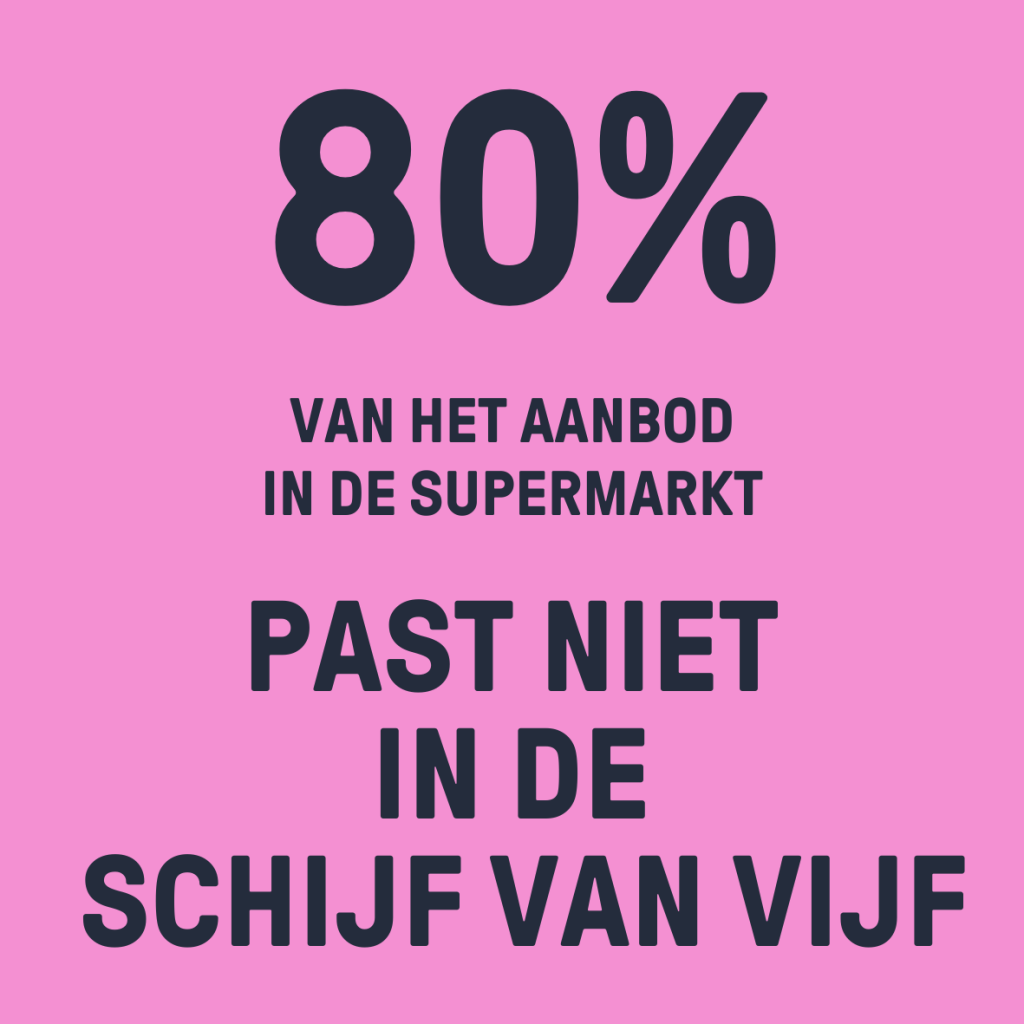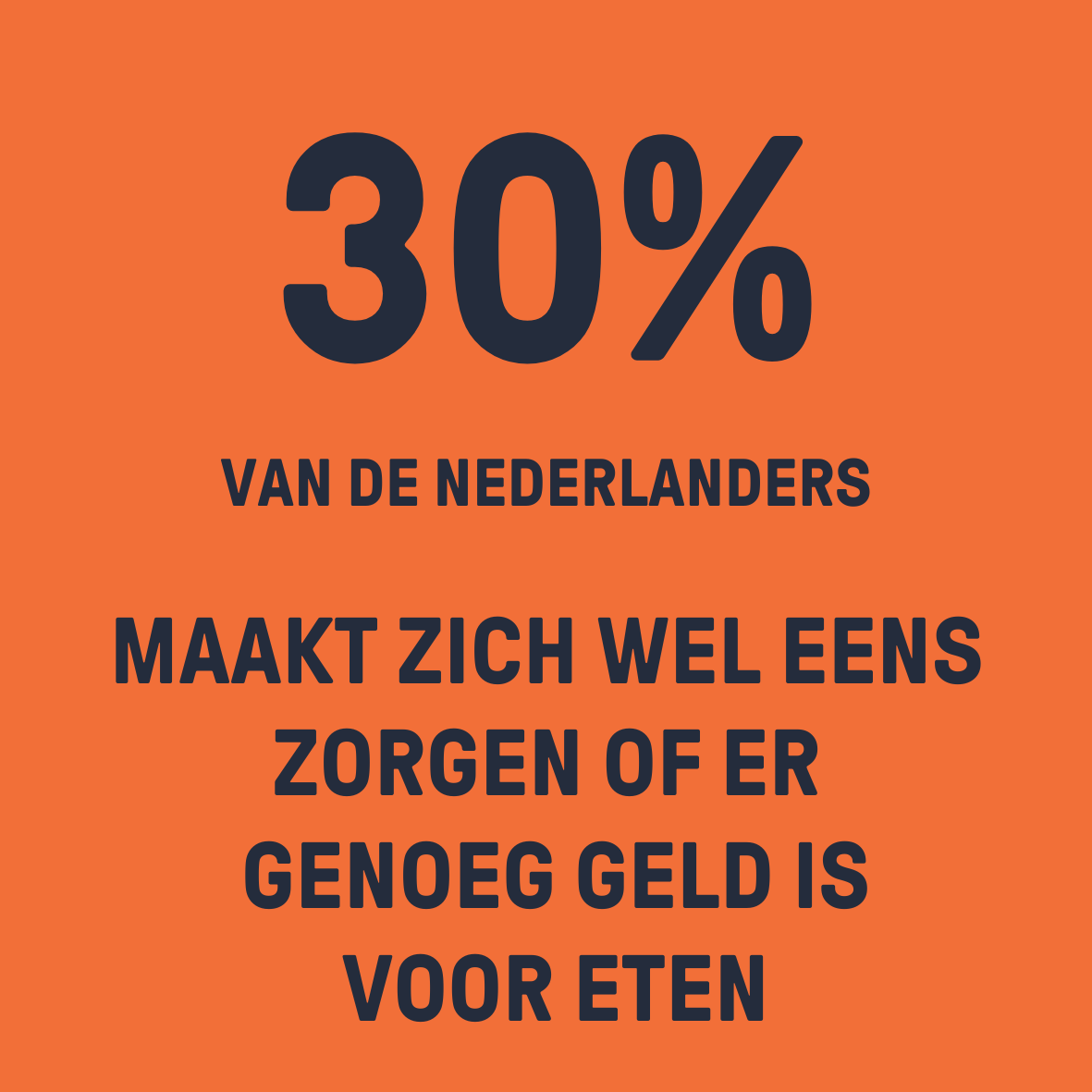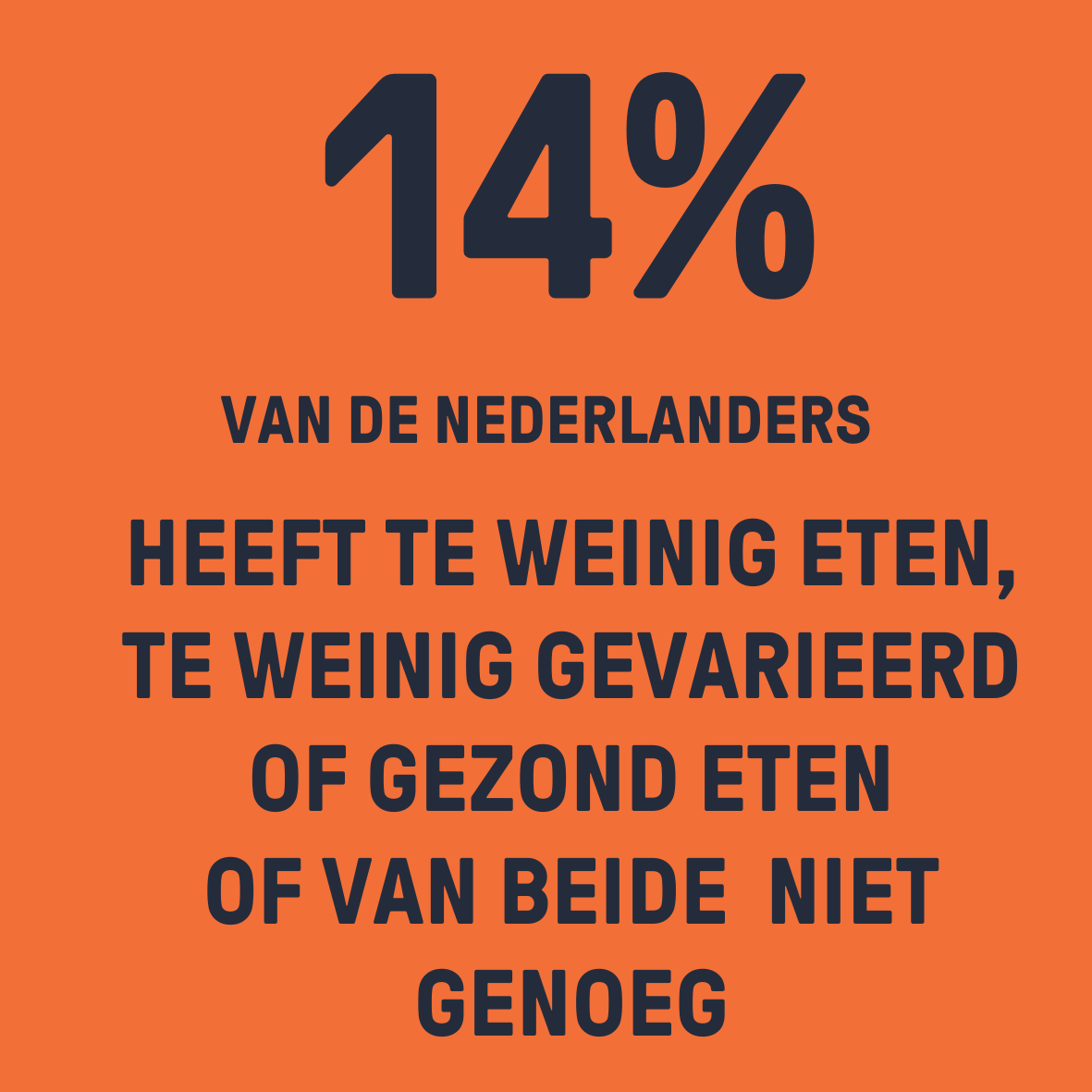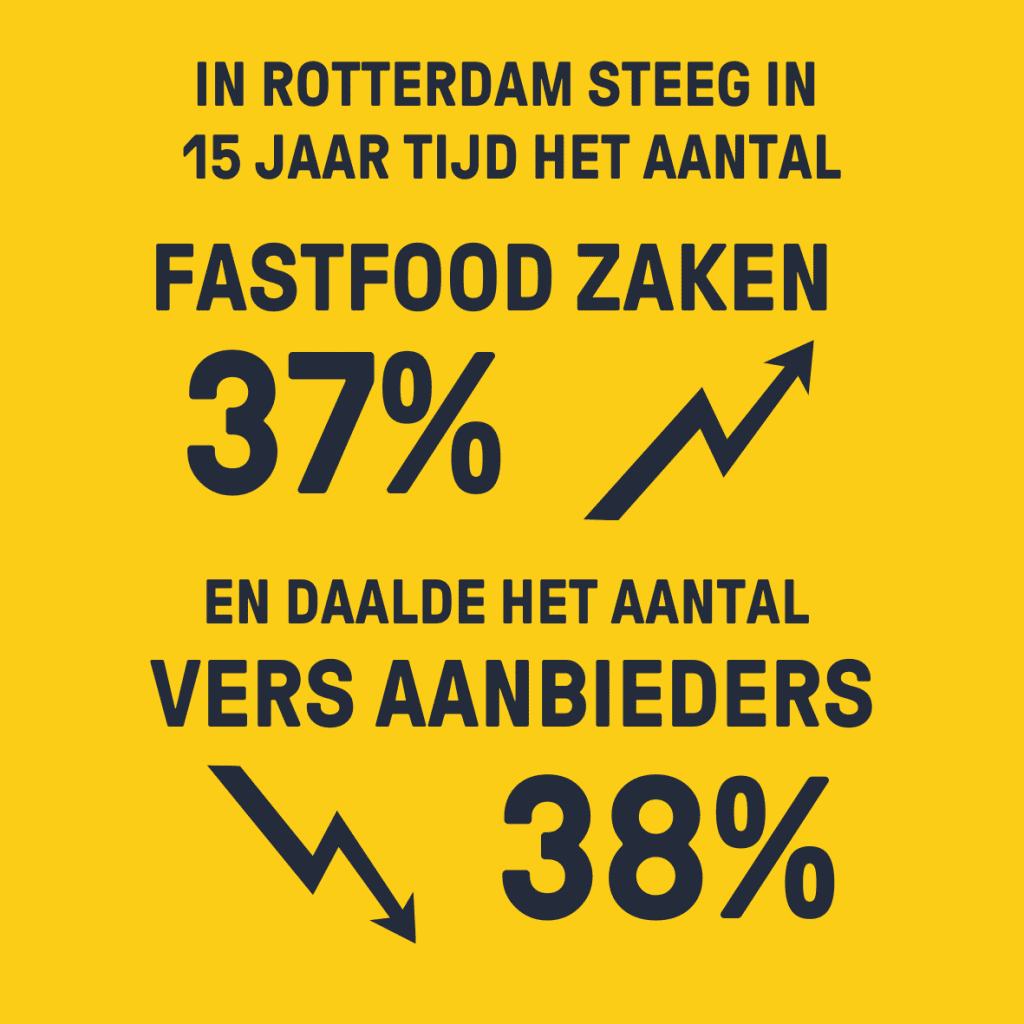LEARN MORE
Make good food a public service
It’s pretty simple. Healthy food is a basic necessity for all of us, not a luxury. And just as we have organized that for other basic necessities – education, public transportation, child care, drinking water – a new basic facility is needed that makes healthy and sustainable food affordable and accessible to all.

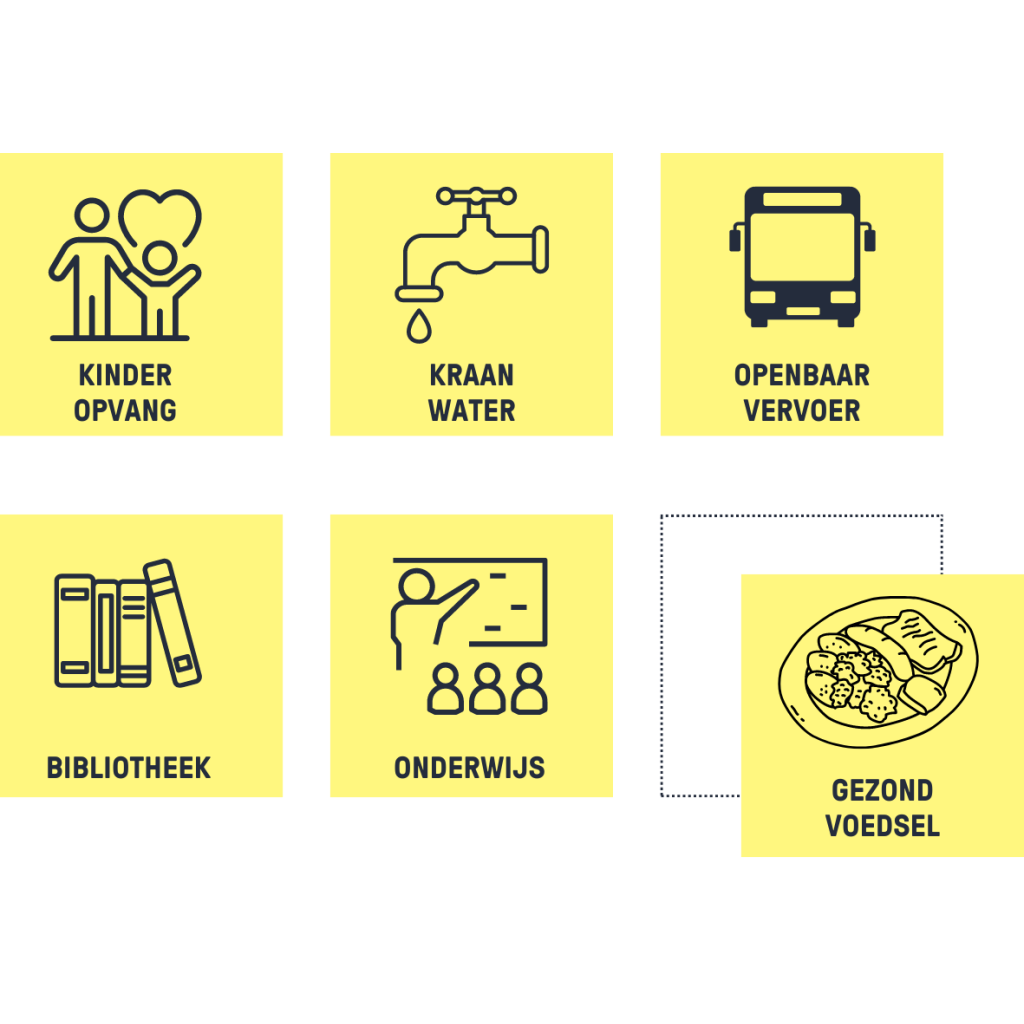
What is the situation now?
Access to affordable good food is of public interest, but the food system primarily serves commercial interests. And this is what is rarely talked about. We talk about a sugar tax, VAT reduction on fruits and vegetables, or regulation of advertisements for unhealthy products, while the root cause of the problem is the privatization of the food sector. With all its consequences. Because profit maximization is not going to improve public health or reduce social inequality. On the contrary:
We need to move toward a mixed economy, where a new public food system exists alongside the commercial market. Just like public transport exists next to the privately owned car and tap water next to botttled water. The public food system provides what the market fails to do: equal access to healthy food for all. After all, food companies know that most money is to be made from our urges – fat, sugar and salt. And in our current food system a small group of people make a lot of money:
While more and more people can barely afford their daily groceries:
So unhealthy food is a business diseased food is a lucrative business model, through which the food industry extracts money from the market while passing on the costs of unhealthy eating to society as a whole.
But there’s healthy food available, right?
Absolutely, there are also healthy products available. It’s just that they are a small minority in the supermarket. And healthy is often more expensive; for example, white cereal products are cheaper than whole grain varieties. We must ask ourselves why we allow healthy eating to be a business model as well? Healthy food is a basic necessity for every human being, not a luxury. The profit that now goes to shareholders, trading houses and supermarkets could also have gone to society as affordable healthy food for all.
Own responsibility
And while our food environment is designed to continually tempt people to make unhealthy and unsustainable choices …
… the government has for decades held to the belief that our food choices are an individual responsibility, rather than a human right and therefore a public duty. In policy, the government’s finger always points at individual behavior and lifestyle. The market stays out of the picture. What we need is not a lifestyle coach to teach self-control to the unhealthy eater, but a system coach to address the behavior of industry and politics.
The solution: food in the public sector
Food that is good for human and planetary health should be part of the public infrastructure. Because serving the public interest cannot be left to the market alone. We experienced this when affordable public housing became an unaffordable housing market.
The role of the government
As with our drinking water and education, this assumes a final responsibility on the part of the government. As legislator, regulator and subsidiser, it must ensure that healthy and sustainable food is affordable and accessible to all. The government does not cook our meals or decide what we eat, but leaves the implementation of the basic provision to social organizations.
For example, through a Mensa Mensa in every neighborhood where you can eat or cook a nutritious meal daily for any budget, through healthy school meals for all children, healthy hospital meals and through subsidized fixed low-priced staples in the supermarket.
In this way, a collective public service is created that exists alongside the market, just like a glass of tap water next to botteled water, or the bus next to a cab.
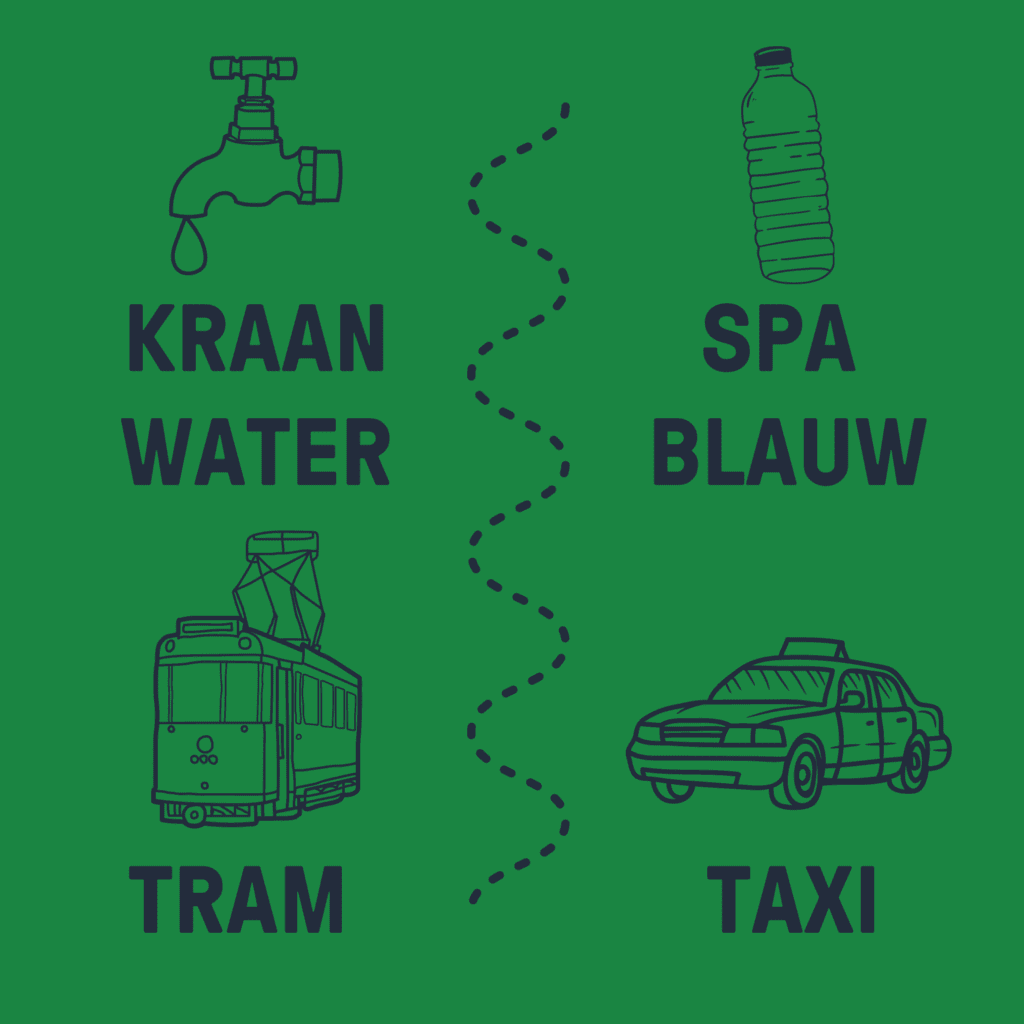
Patronization
Is it patronizing when the government is more concerned with what and how we eat? It is mostly caring, similar to how compulsory education ensures an equal foundation for every child, or wearing a seat belt in the car ensures safe driving for everyone. Moreover, our food choices are already largely determined for us even now. Supply, price, availability and advertising determine for a large part what we eat.
Public interest
So the food transition – healthier, more sustainable, fairer – begins with a new relationship between citizens, government and business; a new relationship between public and commercial interests.


